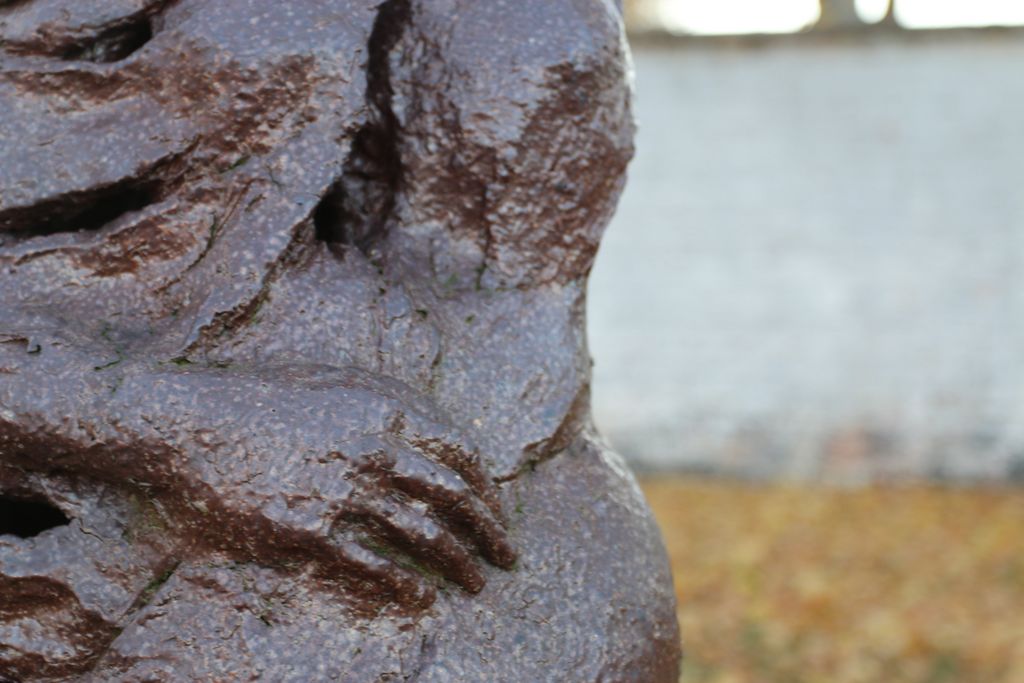Expectation – Oczekiwanie
1973, Glazed ceramic (earthenware with a salt glaze), 110 x 45 x 40 cm
The title offers the first insight into the sculpture. With its upright posture and gaze directed straight ahead, the figure appears poised to confront whatever is expected or coming. This impression is strengthened by the shimmering glaze that coats the ceramic material. It gives the surface a sense of fortification and protection.
While the overall impression is one of containment, certain body parts are heavily emphasized: the head, the right hand and the breasts, which appear to be separated by a deep cleft. This is unsettling at first glance, but it fits with a second way of interpreting the sculpture. A pregnant belly seems to bulge beneath the breasts, and the figure’s right hand rests tenderly on it. While pregnancy and motherhood are often exclusively positively connoted in our society, we forget that they can be accompanied by negative thoughts as well. Self-sacrifice, responsibility and setting aside one’s own needs can certainly be perceived as negative experiences. The artist herself is likely to have been familiar with these ambivalent feelings. She emphasized in interviews that, as a working mother, it was difficult to feed her four children through her art. The rift in the breast can symbolize this dichotomy.
In this work, the artist explicitly references Christian iconography and the Virgin Mary as ‘Our Lady of Hope’. The pregnant Madonna as an individual subject is not a common motif in Christian art. One model for this might be the famous Madonna del Parto by Piero della Francesca from the 15th century, which was originally a fresco in the cemetery chapel of Santa Maria in Silvis in the small village of Monterchi in Tuscany. In both works, the figure’s right hand rests on her rounded belly—an exception to the canonical depictions in which her left hand is on her stomach.
Another motif from Christian Marian iconography is invoked by the hint of a cloak that seems to envelop the sculpture in a few places. When depicted as the ‘Virgin of Mercy’, Mary is often shown sheltering persecuted Christians under her cloak. These motifs have their origin in the medieval tradition of Mantelschutz (‘cloak protection’), according to which someone seeking protection could shelter under the cloak of a person of higher rank. Although no one is visibly seeking shelter in Pociłowska’s Expectation, the unborn child could figuratively be the person in need of protection here. The mother would then be equated with a saint who sacrifices herself and her body to protect a defenceless child.
Teresa Mack, Art History and Gender Studies student



